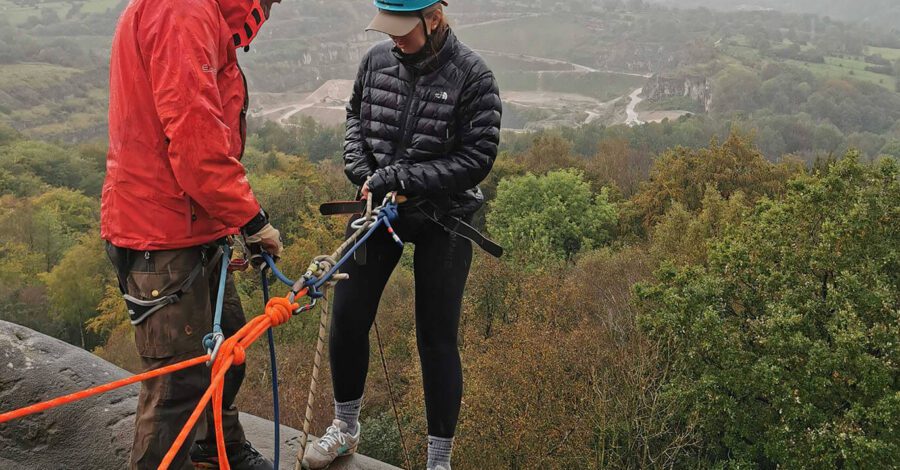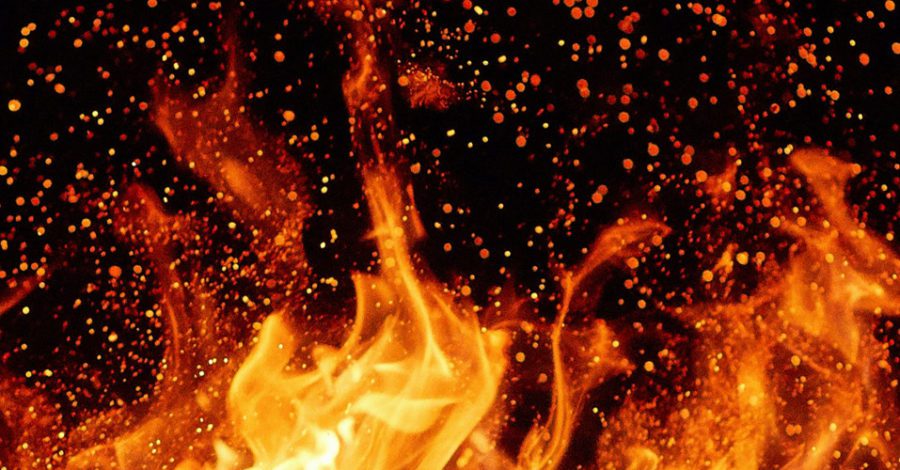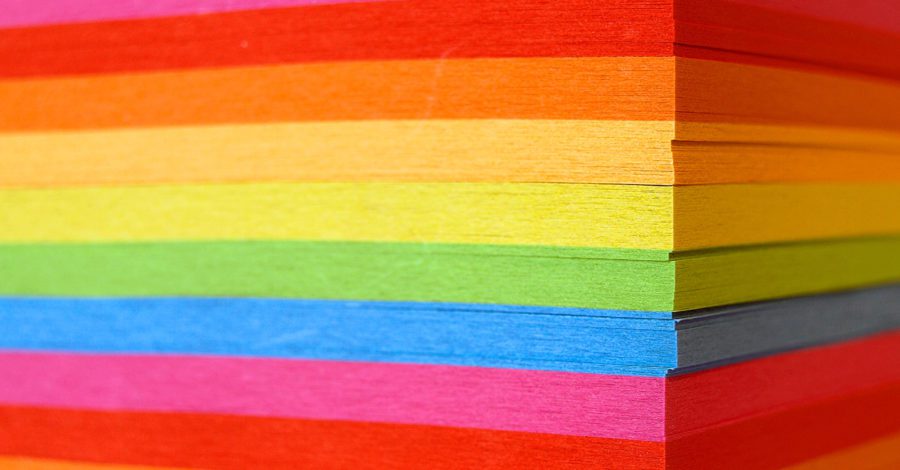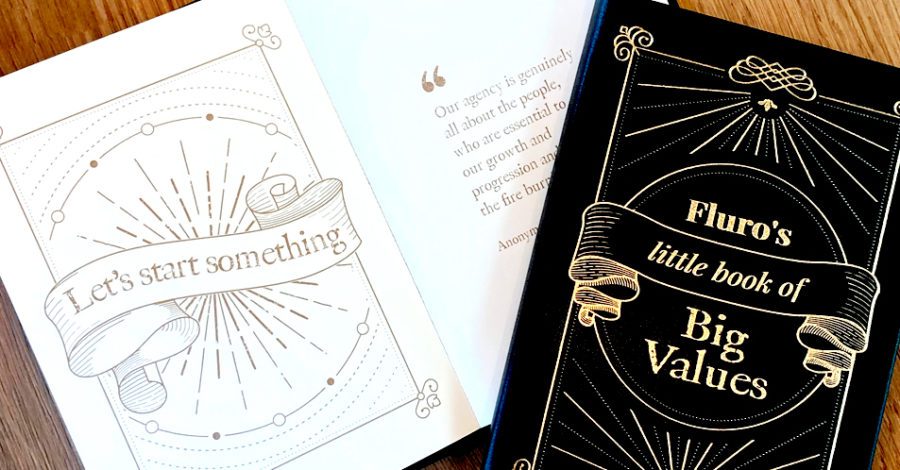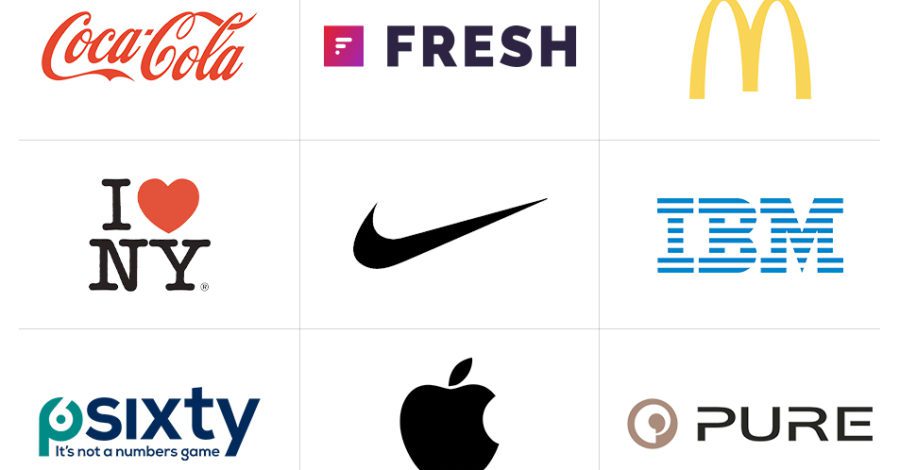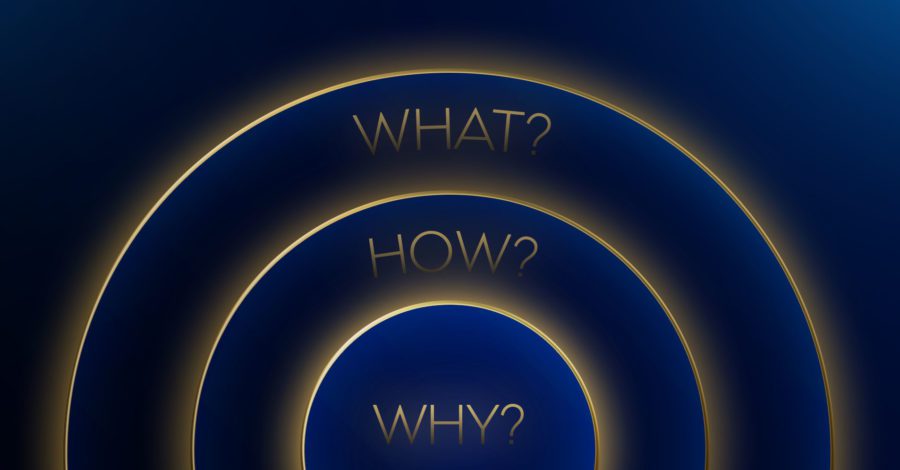The Magnetic Power of Brave Campaigns
Brave and inspired choices in advertising are like beacons in the fog. They demand our attention and inspire action. It’s often the boldest gambits from courageous creative agencies that lead to the most memorable campaigns.
Brave campaigns don’t just defy expectations—they also rewrite the rules for what’s possible. Let’s look at the daring spirit behind some of the most successful campaigns in recent years.
Rolling Stone: Rockin’ Mamas Campaign
This initiative boldly suggested that the ultimate hardcore lifestyle doesn’t belong to rock bands anymore but instead to mothers, who are the greatest rock stars of all. Shattering expectations and celebrating the power of motherhood in the style of music industry reportage, this campaign triumphed with uncompromising flair and spirit.
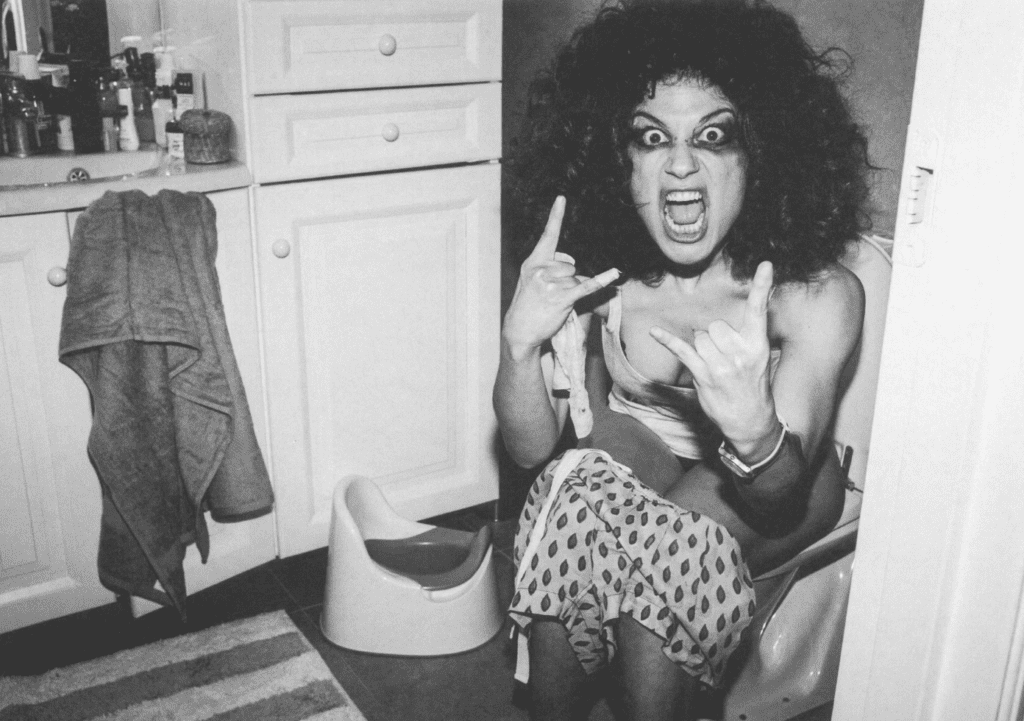
KFC: FCK Campaign #chickencrisis
Facing a logistics debacle that left them without chicken, KFC turned a crisis into a triumph with humour, honesty and humility. Their clever wordplay and transparency turned what could have been a public relations disaster into a brand loyalty miracle.
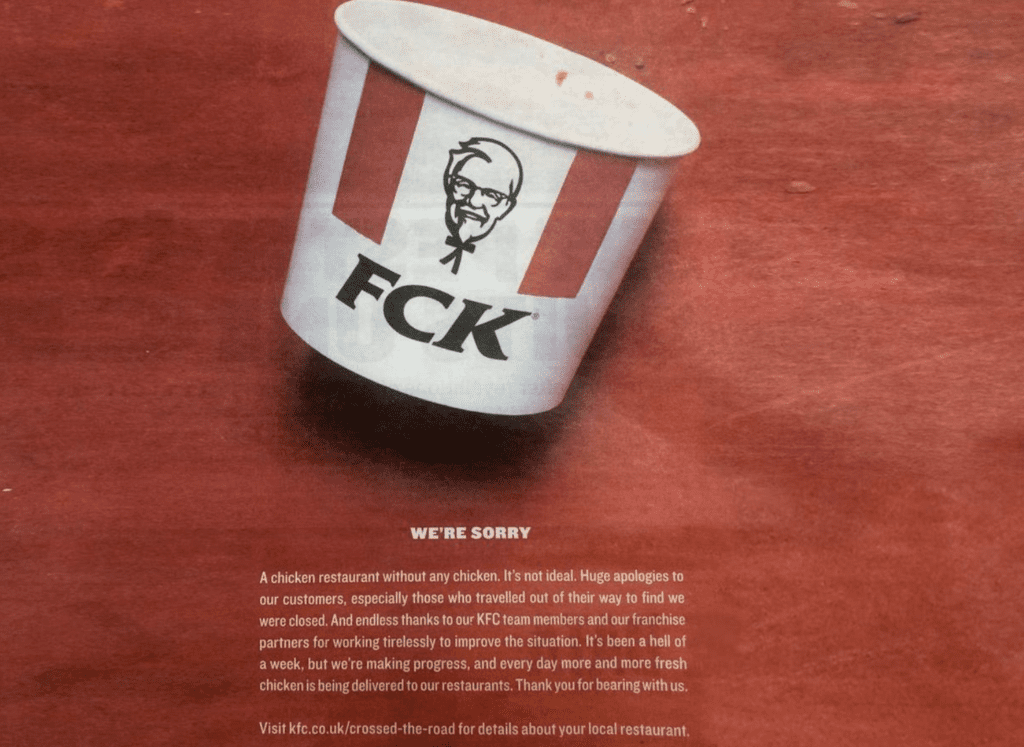
Jaguar: British Villains Campaign
Who says villains can’t have class? Jaguar’s ‘British Villains’ campaign embraced the brand’s heritage with a nod to cinematic rogues, daring to be different and positioning the car as a symbol of sophistication with an edge.
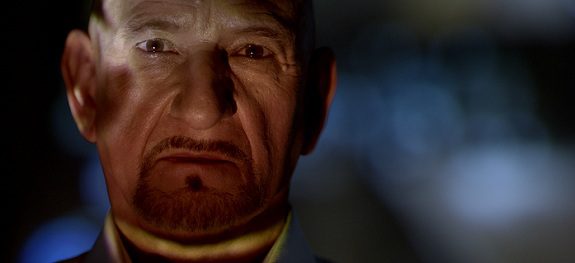
These campaigns didn’t just make a splash—they made waves that rippled across media and consumer consciousness.
The Winner takes it all
There’s a reason we invite our clients to find their brave. That’s because we know from experience that fortune really does favour those who are willing to take a chance by doing things differently. But don’t take our word for it, here’s five good reasons to push the boundaries for your next campaign.
Stand Out from the Crowd
The marketing landscape is cluttered with the noise of countless campaigns. To be noticed is to dare to be different; whether it’s subversive design, provocative messaging or unexpected executions. By breaking away from the predictable, the same old same old, brave campaigns work because they compel our attention and create deep memories.
Spark Emotions
As humans, we are hopelessly led by emotions. When a campaign peels back the layers to reveal the rawness of emotion—laughter, shock, passion—it doesn’t just speak; it shouts. Brave campaigns reach out and touch the heart, becoming more than moments—they become experiences.
Create Buzz
Courage is the match that lights the fire of conversations, both online and offline. Brave campaigns incite dialogue, kindle debates, and often go viral, multiplying their impressions far beyond the scope of traditional advertising methods.
Build Brand Authenticity
In an age where authenticity is more than a buzzword, it’s a creed, brave campaigns that embody genuine brand stories resonate loudly. They cultivate an aura of trust, legitimacy and loyalty that simply can’t be bought.
Drive Action
The most potent benefit of an act of bravery is its unparalleled ability to ignite change—to propel the onlooker from passive receiver to active participant. Brave campaigns don’t just open eyes; they move hands and feet and change hearts and minds.
A Dash of daring
Acts of bravery always resonate. As we’ve seen with exemplary campaigns from Rolling Stone, KFC, and Jaguar, a dash of daring can create a marketing masterpiece. In our endless quest to get noticed and be remembered, we must be willing to embrace courage because, it’s the bravest brands who make the biggest waves.
If you need help to find your brave and make some waves, pick up the phone and give us call. We’re ready when you are.
Let's start something
Want to talk to us about a project?
Just get in touch, we'd love to chat.
Send an email to hello@fluroltd.com
Ring on 01628 525 449
BRAND LOYALTY IN A DIGITAL WORLD
Brand Loyalty looks different today
There’s always been many factors that feed into brand loyalty. Trust, saturation, reach and relevance have and always will play a role in building loyalties, but it’s the way people respond to these factors that are changing.
Technology has become the most significant game-changer when it comes to how audiences react to brand tactics. Factors like digital submersion, the availability of information, the increased mobilisation of culture and loss of trust have had the biggest impact on the ways we engage with brands today.
The Relationship between Tech and Loyalty
No one can predict the future, especially when it comes to tech. The possibilities are expanding every day and it’s not easy to predict what’s going to stick. But we can gain insight by looking at the way each generation interacts with technology and the digital world.
Statistics show that brand loyalties are decreasing on a sliding scale with each generation.
And you can’t ignore the fact that the consumer experience is becoming more and more embedded in the digital world. Which means that existing digital marketing practices are weakening our capacity to build and maintain brand loyalties.
So, what are we doing wrong?
Digital Natives.
Being a digital native is becoming the rule over the exception. So, it’s a no-brainer that digital must be a large part of your marketing strategy. That’s where Gen Z live and that’s where the future lies.
Research.
People tend to research more today, so it’s important to be as visible as possible in various review platforms and media and social channels. Benefits, features and comparisons must be readily available and digestible for easy compare and contrast.
Value Alignment.
Gen Z want to feel personally aligned to the brands they use. 68% of Gen Z & Millennials consider the products they buy to be a reflection of their personality, values and beliefs.
So, find the points of intersection and tell the stories that matter to your audience the most.
Trust.
Thanks to fake news, bogus e-commerce, phishing scams and social spaces becoming marketplaces, our levels of trust attention are eroding. It’s no wonder younger generations are less trusting and better at spotting marketing when it’s in disguise. The takeaway here is don’t use dodgy tactics and don’t exploit the trust you do have with your audience.
Stay alert, stay tuned.
Trend forecasters believe that experience, personalisation, and innovation will remain important to building loyalty in the future. And as new technologies continue to emerge, being able to adjust quickly will be an important part of keeping engaged and loyal customers.
Building brand loyalty today is all about keeping on your toes and trying to stay in tune with each generation’s evolving relationship with technology. So, if you need help tuning in, get in touch at hello@fluroltd.com or 01628 525 449.
Let's start something
Want to talk to us about a project?
Just get in touch, we'd love to chat.
Send an email to hello@fluroltd.com
Ring on 01628 525 449
FIND YOUR BRAVE
DISCOVER WHY BEING DIFFERENT IS MORE IMPORTANT THAN BEING BETTER WHEN IT COMES TO YOUR BRAND.
You’ve heard people talk about it. Branding experts write books about it. Business empires are built upon this single foundation; be different.
Seth Godin once said, “the sound of a small bell during a dark night is louder than the din of traffic outside your window during rush hour. Surprise and differentiation have far more impact than noise does.”
Think about it for a moment. If your unique selling point (USP) is about outperforming or undercutting the competition, chances are you won’t be able to rely on that as a competitive advantage forever. Someone else can come along at any moment and do it better than you or cheaper than you.
So, what’s the one thing they can’t compete with or do better at?
Being you; your perspective, your technique and your experience and all those intangible qualities that make your business different. And when your brand is different, you will stand out.
DIFFERENT IS BETTER
Take Apple, their agenda was not about being better than the competition. Apple was all about being different and their mission to be different informed their entire brand identity and marketing approach, changing the centre of gravity for the sector and the consumer.
Okay, so if different is good, how can you make this work for your business? It’s tempting to fall back on features and benefits when it comes to differentiating your offer, but the competition always catches up. So, let’s look beyond USPs. Instead of trying to be a better version of the competition, we’ll help you become the best version of yourself. Because after all, you’re the only one who can do it the way you can. Your unique qualities and driving purpose have meaning and value far beyond mere features and benefits.
But how do you communicate all of this personality, all the layers and complexities that form your unique character? The simple answer is branding. Branding is the key to true and lasting market differentiation. A strong, distinctive brand will give you a competitive advantage that – unlike features or benefits – can’t be copied or bettered. And unlike features and benefits, we believe that the story you tell about your brand has unlimited potential. In fact, your brand story will only become more potent over time.
WHEN IT’S HARD TO BE DIFFERENT
There are plenty of situations where it’s hard to be different. Sometimes it’s because you’re new, and you’ve got nothing to leverage. Sometimes it’s because you’re familiar and you are challenging expectations. And then there are those times when the intangibility of your offer makes it feel like you’re chasing a phantom.
– When you’re brand new
Building a memorable brand can be difficult for any new product or business. After all, how will anyone ever find you if they don’t know you exist? But that’s where marketing experts can step in and lend a hand.
The business of getting your business ‘out there’ is called Brand Awareness, and it’s a core principle in advertising. It involves first creating a memorable brand identity through design, tone of voice and customer experience and making sure your brand gets noticed and remembered through a combination of inbound and outbound marketing strategies.
– When you’re lost for words
When your offer is something new, whether it’s a product, service or business model, it makes talking about your offer a real challenge because you can’t leverage an existing ‘language’. We’ve had clients present us with an offer that doesn’t easily slot into any existing sector categories or terminology. This can make it difficult to communicate your message to the world, especially in an online context where search engine optimisation and pay-per-click (PPC) rely on keywords to communicate your offer effectively.
Coining a phrase or term for your new offer poses a problem when it comes to digital marketing and communication, because if no one is using that term, keyword or phrase in their search, then how will they find you?
– When your offer is intangible and iterative
For many start-ups there is often no physical product or service to offer, especially in the early stages of development where the ‘product’ is intellectual property. Defining immaterial goods and services makes brand identity challenging because there’s fewer opportunities to use packaging and signposting to communicate your look, feel and tone of voice.
Plus, it’s tough to define a brand when the goal posts keep changing. The nature of a start-up business often means that the brand will undergo several transformations before it gets to market. This makes it hard to know when it’s the right time to commit to a brand identity. For many start-ups, creating a strong brand identity between rounds B and C can have more impact than waiting till after the final round. Even though the parameters might change again, being armed with a strong brand identity during the funding process can project confidence and present a more concrete vision.
– When your brand is established
Loss of brand equity is usually the biggest barrier a business will have when it comes to rebranding. And we get it. A drastic change in branding has the potential to alienate existing loyal customers who have strong associations with the old brand.
That why with careful research, planning and clearly defined objectives we can protect the major brand elements to preserve recognition.
Communication is key for any successful rebrand, having an official launch and sharing the reasons behind the rebrand goes a long way towards mitigating any potential loss of brand equity. A continuous effort to monitor the impact of the rebrand will mean that we’ll be ready to adapt strategies based on feedback and market responses.
FORTUNE FAVOURS THE BRAVE
“Who Dares Wins” isn’t just a Channel 4 reality series or a John Wick tattoo and as a sentiment, it goes much further back than the British SAS. The earliest record of “Fortune Favours the Brave” or something like it, has been attributed to Roman writers in the centuries before Christ and it remains potent to this day.
Why does this phrase still have so much power?
Because it’s not easy being brave. If it was, everyone would be. Only those who overcome their fear of failure, their fear of change and challenge will win the ultimate prize of success and good fortune.
Sounds intense, doesn’t it? But in reality, being brave doesn’t start with confidence. Being brave starts with determination and courage can be learned and developed. It’s not about leaping blindly into the unknown, it’s about being observant, learning how to evaluate risk and recognise opportunity when it comes knocking.
HOW TO FIND YOUR BRAVE
We don’t expect everyone to be comfortable with our approach at first and it’s important to know that we don’t equate being brave with being foolhardy. For us, being brave is about self-awareness, understanding and great timing. To help you understand our approach, we’ve put together a list of Five Ways to Find Your Brave;
A balanced perspective
Fear can be useful. If we acknowledge our fears, we’re one step closer to overcoming them.
Identify your strengths
When you’re confident in your abilities, you’re much more willing to go all-in when an opportunity presents itself.
No risk, no reward
What’s the worst thing that could happen if you take a risk? Now compare that scenario to what will happen if you do nothing at all?
The Comfort Zone
Build your courage muscles by pushing yourself outside of your comfort zone slowly and more often. Get comfortable with feeling uncomfortable. Make peace with uncertainty.
Failure=winning
When you take a risk, you never really lose because you either succeed or you learn from your mistakes.
Being guided through the process by someone who’s done it before and has the skill to uncover and define what makes you special will make all the difference to your journey. Having a like-minded creative partner will help you build and market a brave brand. A brand so different and so strong that it will the only reason your customer chooses you.
Let's start something
Want to talk to us about a project?
Just get in touch, we'd love to chat.
Send an email to hello@fluroltd.com
Ring on 01628 525 449
Do I really need branding?
It’ll come as no surprise from a branding agency, but we believe that a brand should form the foundation of all your marketing activities. Building a brand is like weaving a thread into everything do. Your brand should inspire and inform everything from your packaging and social media to your templates and tone of voice.
“A brand is a story that is always being told.”
Brandstream founder Scott Bradbury
It’s the one story that you’re allowed to tell again and again. And it’s the one story that matters most when it comes to carving out your niche in the market. So, yes, the short answer is that you do need branding. But if you don’t believe us, here’s some pretty great reasons why.
Why You Need Branding… really
1. Consistency is key
Your brand is usually the first point of contact you’ll have with your customers. Being consistent is critical to that first impression and instrumental in being recognised again in the future.
Your logo, signature colour palette, fonts and tone of voice work together to create your brand. And if any of these elements are changed or adapted, used in the wrong place or in the wrong way, it can weaken first impressions, your brand and your reputation.
Having a brand book is the best way to ensure that your brand is always presented consistently and authentically.
2. Get noticed
There’s an old saying that “the riches are in the niches”. Everyone knows that trying to be everything to everyone never works and yet we hear it all the time, “but our product is for everyone.”
We get it, no one likes to miss an opportunity. But if you don’t want anyone to miss out, then you’re never going to stand out. When you confidently position yourself as exactly what your customer needs, it allows you to be more specific, and plan your strategy with laser accuracy.
3. Remember your audience
It’s natural, logical even, to want to talk about yourself when it comes to selling your business. But here’s a truth you might not want to hear. Your customer doesn’t care about you, they care about themselves.
We’re all the main characters in our life story. Good branding will make you a welcome guide in your customer’s story, instead of a pushy passer-by who wants to take over.
Not having a consumer-centric mindset is a common mistake that we see all the time whether it’s web copy or ad campaigns and it can often worm its way into strategic planning. To find out if you’re guilty of this, have a read over your copy and see if the words ‘we/us/our’ appears more than ‘you/your/you’re’.
4. Be strategic
Not having a brand strategy is like trying to find your way to Stevenage without a map. You wouldn’t risk it would you? Because while you might have a general idea of where you’re heading, the chances of finding it without assistance is slim to none.
Aside from giving your brand direction and a framework to build on, the most important job of a brand strategy is to give your business purpose. Having a reason to exist outside of ‘making money’ and ‘selling our thing’ will empower you to set your brand apart from the competition and shape the way your brand is perceived by others.
5. Embrace emotion
People don’t buy things, they buy feelings. No matter who you are or what you’re selling, it’s not the end goal for your customer. For them, it’s a vehicle to the feelings that they’re seeking.
We’ve seen it time and time again, websites, ads or emails that lead with features. Stop doing that. Don’t even lead with the benefits. Instead, try starting the conversation by creating a feeling, specifically the feeling your customer gets when they use your product or service.
Don’t believe us? Well, we encourage you to do your research, there’s plenty out there. According to Psychology Today, research showed that very negative or positive emotions about your brand or brand experience will never be related to material factors. To get that “wow” response and delight your customer, the experience always ties into that emotional human factor.
Let's start something
Want to talk to us about a project?
Just get in touch, we'd love to chat.
Send an email to hello@fluroltd.com
Ring on 01628 525 449
Heroes, Villains and Catastrophe – Why Storytelling Sells
In our previous blog post, we looked at how storytelling can influence everything from brand story to design strategy. You can read more about the science of storytelling in this article, but for now, let’s figure out how you can apply the basics to your brand and learn how character and crisis are powerful tools in your storytelling toolbox.
Who cares about your message?
Great drama doesn’t exist without great characters. Whether you’re empathising with Hannibal Lector or Peter Parker, if you care about the character, you’ll stick around. The people in your story are your messengers, so if we don’t care about them, why should we care about the message?
Alfred Hitchcock said, “The more successful your villain, the more successful the picture”. While this doesn’t mean your ‘story’ has to have a bad guy, it does mean that your characters must have substance. When you build your brand story or next campaign, consider the characters at the heart of the story and how to bring out their most interesting traits.
Choosing a great messenger
John Yorke, who literally wrote the book on storytelling says, if there’s nothing to offend us, “then there’s certainly nothing to attract our attention either.” He believes it’s “the rough edges, the darkness” that draws us in. We might not want to admit it, but we all have a dark corners and while it’s rarely the obvious route when it comes to promoting your brand, it’s worth keeping in mind that ‘nice’ doesn’t always win hearts.
Remember Walter White from Breaking Bad? Such a deeply flawed character and so full of conflict but one of television’s most beloved characters. And don’t forget Cersei Lannister, Hannibal Lector and who doesn’t love the Joker? The beloved baddie is a little harder to find in advertising. While there’s been more than a few ads that didn’t quite manage to capture the allure of the baddie, Jaguar’s Good to be Bad campaign is a sterling example of how the bearer of your message doesn’t always have to be nice.
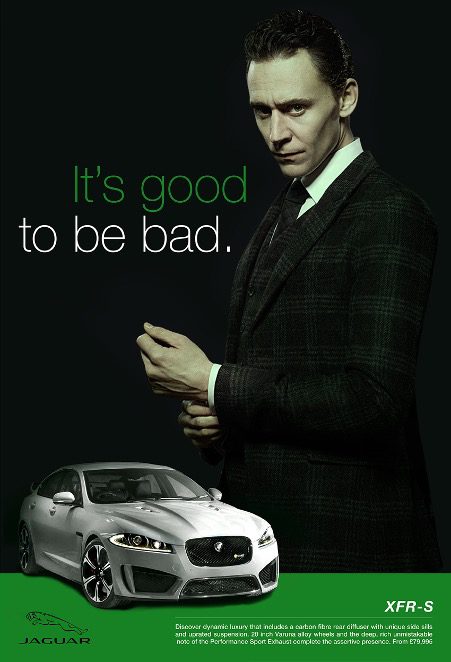
Find the crisis in your call to action
Creating a narrative is one of the best ways to persuade your audience to believe what you’re saying, and the key element to writing a good story is known as ‘the inciting incident.’
Yorke describes an inciting incident as the crisis of the story, or the problem that needs to be solved. The inciting incident is the moment your character is faced with an obstacle and forced to ask themselves the most important question, ‘what kind of person am I?’
In an ad campaign or brand story, it’s this crisis that provides the opportunity for your brand to provide the solution; it’s the ‘why’ behind your product/service.
Persil’s Dirt is Good campaign demonstrates a shrewd use of crisis. Persil insinuate their brand as a hero solution to the widespread concern that children aren’t playing outside enough.
A well-crafted, imaginative or dynamic inciting incident can lead to an equally excellent Call to Action. Give your audience to a reason to click, buy or call; give them a reason to care.
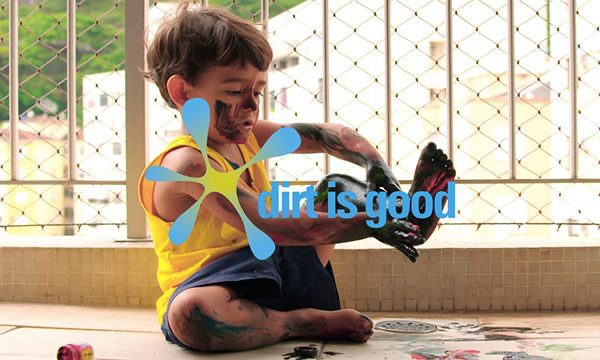
Story creates meaning
It’s a well-documented fact that when a person reads, sees or hears a well-told story, their brain reacts as if they are experiencing it themselves.
Stories have a unique ability to build connections and a great creative agency knows how to tap into this super power to create better, more engaging results.
Let's start something
Want to talk to us about a project?
Just get in touch, we'd love to chat.
Send an email to hello@fluroltd.com
Ring on 01628 525 449
Strategic Thinking
Strategy at a Creative Agency
Whether it’s design, copywriting or brand strategy, the work we do at a creative agency happens in the liminal space between an objective and its end. At Fluro, we use our creative skills to influence the way an objective reaches its end. To use a real-world example, if a carton of milk is the object, and the consumer is the end, then an advertising campaign is the means to connect the consumer with the milk.
Our copywriter attended Uri Baruchin’s short course at D&AD about strategic thinking. This is a big topic, and there’s a lot of wisdom out there about how to ‘do strategy’. And while we don’t want to ruin the surprise, we thought it was safe to share the bigger lessons we learned from Uri’s Think, Plan, Act workshop.
We are all strategists
While you might not consider yourself a strategist, you are a strategic thinker. Apparently, we all are.
Uri used a 1995 research paper about public toilet stalls to demonstrate the role that strategy plays in the selection process. In the Psychological Science journal, Nicholas Christenfeld conducted a study on which public toilet stalls are most commonly chosen. He used this data to illustrate the way we use strategic reasoning on a daily basis.
And when it comes to developing a creative strategy, developers, designers and writers are all part of the strategic picture and we all contribute in our different ways.
As well as being an interesting way to break the ice, Uri’s example helped us understand the dangers of choosing “the middle stall” when it comes to strategic brainstorming.

Strategies that stand out
It’s very easy in a studio environment to get into a creative groove, where the same people keep doing the same things in the same ways. If you keep doing – strategy or creative – the same way every time, you will keep getting the same results. We’re all guilty of this, because in the end, it’s hard to not be you right? And as much as we fall into this trap as individuals, it’s also happens in group work and in society at large.
A group task challenged the learners to come up with a strategy for a gin campaign. We were broken up into groups to come up with a strategy for our chosen tipple. When we all came back into the room to share our ideas, it was shocking to see how similar our strategies were.
This simple task made it obvious that there’s no benefit to staying in your own creative lane. On the contrary, it pays to open the discussion and always cast the net wider to explore those less popular, less obvious perspectives.
Whether it’s a small group in an agency, a community, or a society – we often tend to think along similar pathways – and the result is that we all come to similar conclusions. Needless to say that it pays to take the path less travelled, unless you want to end up in the same place as everyone else.
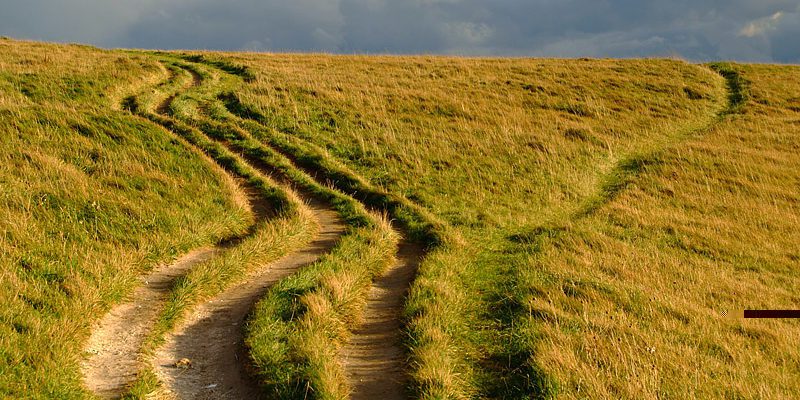
Managing strategic and creative processes
The final lesson from Uri’s workshop was that strategy is messy work. There’s a lot of ideas and opinions flying about and it’s not always easy to distinguish the great ideas from the good ones. As much as there are some really useful guides and templates, workshops and mind maps available, there is no magic formula to making hard decisions. Being a good decision maker comes down to experience and judgement.
While Uri didn’t have the secret to making good decisions, he did provide a handy set of tools to help us guide ourselves through the hard parts; the messy processes between research, concept and execution.
After all, the act of creating is really just a series of decisions. A writer wrestles with decisions about words, narrative and motivation. Designers have decisions to make about colour, spacing, typography etc.
Perhaps the most powerful lesson of all was realising that not only are we all strategic thinkers, but we’re also all creative thinkers. And we will always do better when we work together.
Let's start something
Want to talk to us about a project?
Just get in touch, we'd love to chat.
Send an email to hello@fluroltd.com
Ring on 01628 525 449
What is rebranding and why do I need it?
Are you considering rebranding your business, product, or service? If you’re like most business owners, you’re probably concerned about when and how to go about it. You know there’s risks involved, but you also know that it’s riskier to do nothing. Regardless of how long you’ve been considering the idea, it’s not something to go into half-heartedly. You should feel confident about your reasons behind the decision and when the right time is for your business. And you should feel great about the branding agency you select to guide you through the process.
It’s not just a new logo.
You probably already understand that a rebrand is not simply a case of giving your logo a facelift. Your brand should be a representation of who your company is: your positioning, your values, and your ethos.
Here are some of the reasons why businesses decide to rebrand;
Our staff are embarrassed to introduce our potential clients to our collateral / website…
If your team is afraid to send a prospect to your website or share your collateral with a potential client, how much business are you losing out on?
We are changing our name…
Perhaps one of the most obvious times to rebrand; a name change is a great opportunity to re-evaluate your brand, identity and ultimately how the business is aesthetically perceived.
Our brand looks dated…
Your brand is often the first impression potential clients will get of your business, so make sure its a good one. A dated “look” makes your business look tired to potential customers and staff alike. Rebranding is an opportunity to make sure your image and message are aligned and up to date.
Our brand isn’t a true reflection of what we do…
If your audience doesn’t understand who you are, why you’re different and what you do, you may as well stop marketing to them. A rebrand done right should give your market a clear picture of what you do and why you matter.
Our material all looks different…
Your logo, collateral, website and marketing all needs to push in the same direction. When your brand is consistent you are reaffirming your image, professionalism and strategic message at every opportunity.
Our competition is getting all of the limelight…
Can you ever afford to loose a customer to your competitor because their branding looks more appealing? Your brand is your shop window and if what’s on display looks unprofessional or out of date, potential clients will assume the company behind it is as well and go elsewhere.
If any of these points sound familiar, then it’s probably time for a change. Give us a call to find out how we can help. We’ve worked with companies of all sizes in a huge range of sectors and would be happy to talk you through our process and show you some of our work.
Let's start something
Want to talk to us about a project?
Just get in touch, we'd love to chat.
Send an email to hello@fluroltd.com
Ring on 01628 525 449
Why storytelling makes more powerful connections
The foundations of storytelling inform everything from logo design and key visuals to brand story. Find out how the basic elements of dramatic form apply to your brand and why it’s such a powerful way to connect.
A dangerous beast threatens a community. Only one man can kill the beast and restore happiness in the land…
This story sounds familiar doesn’t it? Well, that’s because it is. As John Yorke points out in the first page of his book Into the Woods, this story outline is also the premise of Jaws, Jurassic Park, The Exorcist and countless other films, but it’s also the story of Beowulf, the Old English epic poem.
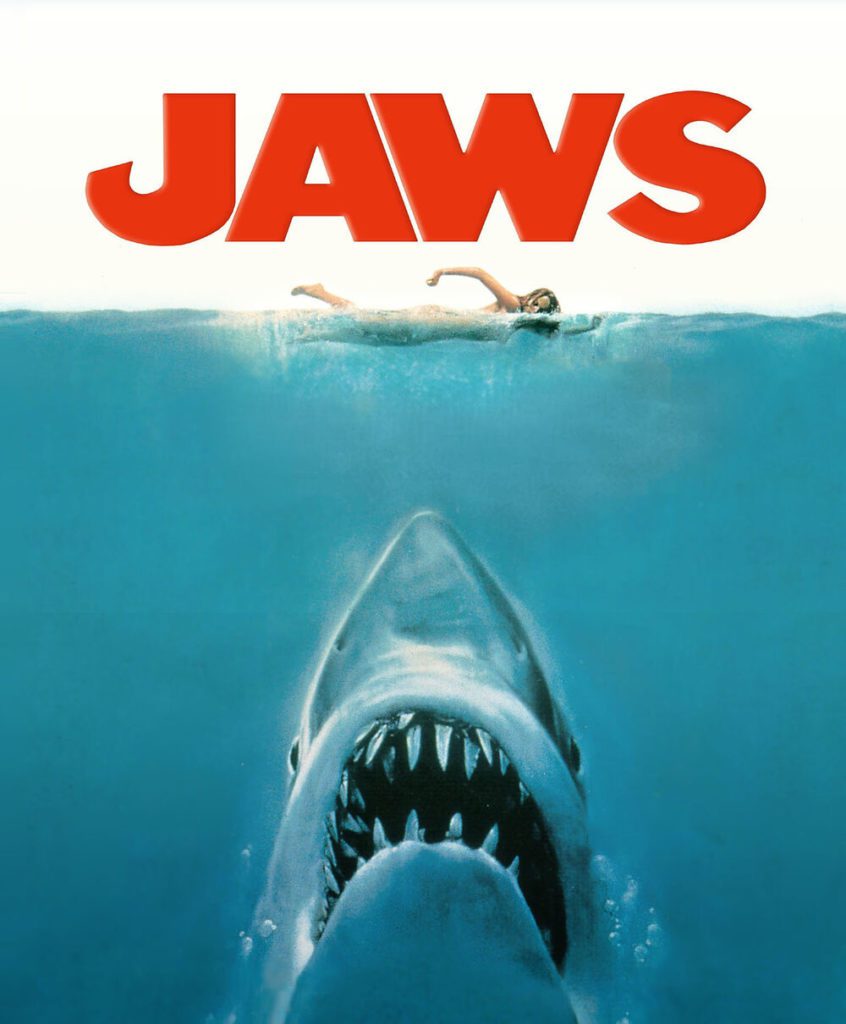
Or what about the one about the man who strikes a bargain with the devil, his soul in exchange for powers untold? Ringing any bells? The story commonly known as Faust comes from the Bronze Age folktale The Smith and The Devil, estimated to be around 6,000 years old according to a BBC article delving into the surprisingly long history of fairy tales.
How Storytelling Impacts your Brand Strategy
It’s no coincidence that the basic shape of storytelling is so enduring. Yorke believes there’s a reason we keep going back to the same themes and using the same structures and that it goes a lot deeper than convention. How strange that we continue to get such pleasure and delight from essentially telling the same stories again and again? Yorke insists that dramatic structure is not merely a social construct but an essential expression of our humanity, “as important to us all – almost – as breathing.”
From the ancient oral traditions to teach lessons and caution the young, to religious canon, and Classical mythologies all the way up to today; everything from YouTube ads to reality television, storytelling dominates our lives. So, it makes sense to try and understand how and why it works.
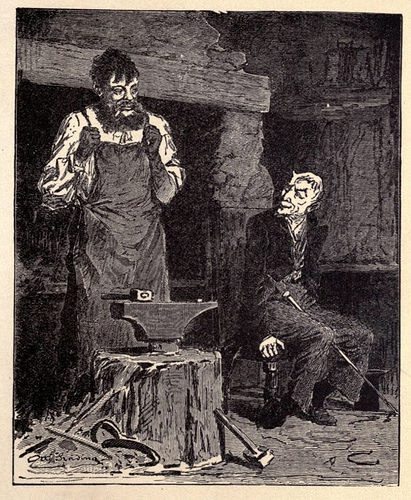
Using Drama to Improve Your Brand Story
You’ve heard of the three-act drama, set-up, conflict, and resolution; it’s the building block of any story. Yorke believes that this structure is essentially the playing out of a theme, an argument about the world that comes in three parts. Love, hate, jealousy, courage, coming-of-age, revenge – theme is drama.
In Nike’s ‘Play New’ campaign the main theme, in its purest form, is overcoming failure – something we’re all familiar with. But Nike steps in, reminding us that we can all triumph just by having a go.
When we read a story that relates to us, we identify with it and it makes us feel ultimately less alone. The more universal the theme, the more relatable it is to a larger audience. Alternatively, if you’re trying to appeal a niche audience, then it can help to refine your theme into something more specific.
If you need help identifying the themes in your brand story, let us help you create some drama. Give us a call on 01628 525 449
Let's start something
Want to talk to us about a project?
Just get in touch, we'd love to chat.
Send an email to hello@fluroltd.com
Ring on 01628 525 449
What makes a good logo?
For many designers, creating a logo is the purest possible expression of the work we do. The logo is often the first point of contact for a consumer. It’s the distillation of your brand’s visual identity to its simplest form.
There’s an essential set of ingredients in the perfect logo. Let’s consider some of the most celebrated logos in the history of design to explain what they are. We’ll also throw a few of our own recently designed logos for good measure. They might not have a place in the international logo hall of fame yet, but they follow the same basic principles; simplicity, timelessness, and relevance.

Creating a Logo? Keep it Simple
The Apple logo has long been admired. Its popularity has steadily grown over the years for the elegant way it reflects the simple, intuitive nature of the company’s products.
Simplicity is a key ingredient for creating a strong logo because consumers usually only focus on a logo for a short period of time. A truly strong logo can capture the personality of a brand in the merest of glances.
Other examples of simple logo design include letter and word marks. These dispense with images altogether and communicate brand personality with fonts and colours. Overall, using as few elements as possible to communicate the brand’s personality is critical.
We have achieved just that with this logo. We breathed new life into the brand identity for Fresh, who create digital workspace solutions using the Microsoft product suite. Their new look is bold, modern and eminently simple.
![]()
We combined a wordmark alongside a simple square that incorporates the initial letter of the brand.
Iconic and Adaptable
We’ve looked at Apple, so how about the Big Apple? This iconic logo was designed by the legendary Milton Glaser. You won’t need telling that this logo is still used as often today as it has been in the past.

The logo first appeared in a television commercial in 1977 as part of a campaign for New York state. Apparently, Glaser sketched the logo on the back of an envelope on his way over to a meeting. He gave them the design for nothing, not believing it would ever amount too much.
Over the past 44 years, the logo has been adapted to celebrate many cities and countries across the world. It’s also been used for everything from science and gymnastics to chihuahuas.
It can be tempting to incorporate current design trends when creating a logo. But this epic example shows the value in creating something with a more timeless appeal. Think also of the golden arches of McDonald’s and Coca-Cola’s iconic wordmark which both remained unchanged for decades.
Timeless over Trend
A timeless logo draws strength from the core qualities of the brand. Rather than leaning on trend, it’s always better to be self-reliant when it comes to logo design. Timeless designs also tend to favour simple colours and textures over fussy gradients and extensive palettes.

Our own designer was looking for timeless appeal with this logo for Pure digital radios that helped this pioneering audio brand step into a new technological era. The icon represents a conch shell which is synonymous with sound. It also features a ‘P’ for Pure, making the logo identifiable even without the wordmark.
Remaining Relevant
As with any form of great marketing, the best logos are always relevant to the brand and the sector in which they belong. The much-loved Nike swoosh perfectly captures the movement and dynamism that is spot on for a sports fashion brand.
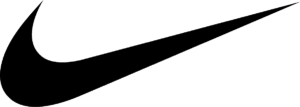
Bearing in mind the incredible impact this logo continues to have, it’s hard to believe it was created by a graphic design student in 1971 who was paid just $35 for her work. When Carolyn Davidson showed Nike co-founder, Phil Knight, the idea, he wasn’t too impressed. “I don’t love it,” he said. “But it will grow on me.”
The choice of colours can add to the relevance of your logo. A company that sells toys, for example, may well choose bright colours that communicate fun, and excitement, while a British brand would have good reason to opt for a bold red, white, and blue palette.
The font used in the logo or wordmark can add further relevance. Angular and thin fonts are ideal for a company that works in technology while a softer, more flowing font might work well for a perfume or other products targeted at women.

It’s not just the name that makes the Psixty branding relevant for a bold and innovative new recruitment start-up. Our designer’s clever use of negative space in the ‘p’ adds an extra layer of cleverness that is both simple and wholly appropriate to the company name.
Create an Identity
We’ll leave the last word in this brief discussion about logos to Paul Rand, the famous American designer from the 1950’s and 60’s who created, among others the IBM and the UPS logos: “A logo doesn’t sell (directly), it identifies.”
That’s true, of course, and yet time has taught us that, as the fingerprint for a brand, the best logos can certainly play a strong role in the selling process. Looking for a new logo? Get in touch with us today.
Let's start something
Want to talk to us about a project?
Just get in touch, we'd love to chat.
Send an email to hello@fluroltd.com
Ring on 01628 525 449
What’s your type?
Choosing a typeface is an essential part of brand development. But where do you start? With thousands of free and paid-for fonts available, it can make your head spin. But don’t despair, following these key principles to help guide you through the process, you’ll meet your match in no time.
While good designers already know this, most ordinary folk don’t understand the difference between typeface and font. A typeface is a complete group of characters (think of it like a family). A font is the variation that makes up that family (bold, italic, light etc). Now that’s out of the way, let’s get into it…
Finding Your Font Style
Determining a font style is a great place to start when selecting your typeface. Serif, sans serif, slab serif, script, mono and display are all broad categories of typography. To keep it simple, let’s focus on serif and sans serif for now. The term serif means ‘a slight projection finishing off a stroke of a letter’. The word ‘sans’ means without. Which makes a typeface without serifs, sans serif. Simple, right? Serif fonts are traditional and classic, whereas sans serif are more modern and clean.
Have you ever noticed that the majority of books, magazines and newspapers are written using a serif typeface? That’s because generally speaking, serif typefaces are easier to read for longer copy. Serif typefaces help the eye travel along the line. But don’t be afraid to use a sans serif font for brochures and reports, where you have more design freedom. You also need to consider your audience. Sans serifs are preferable for children or readers with visual impairments as their simplified letterforms are easier to recognise.
Theme and Variation
When choosing your typeface, think about how many font variations you might need. The more fonts within the typeface, the more options you have. Bold, regular and italic are a thing of the past. These days we’re blessed with a multitude of different font weights. Helvetica is one of the most popular typefaces in the world. Used for every typographic project imaginable the reason for Helvetica’s popularity is not solely because of its neutrality, but also because of its flexibility. The complete family consists of dozens of fonts, including regular, condensed, compressed, narrow, rounded, textbook and everything in between! If you need a comprehensive font library, consider variation when narrowing down your search.
Fonts are like People
Like people, different fonts have different personalities. It’s important to work out what fonts match your intended tone of the communication. Serif typefaces are often associated with being reliable, formal, respectable, authoritative, and traditional. Sans serifs are described as being universal, clean, modern, sensible and straightforward. Script typefaces exude elegance and creativity, whilst slab serifs come across as strong and authoritative. Each font evokes different emotions. Working out what personality you want to portray is key to ensuring that you connect with the right audience.
Let’s Be Clear
On your search for the perfect typeface, it’s easy to find one that you LOVE. But at the end of the day, if it’s not legible, then it’s not a match for you. Sometimes you need to put your personal preference to one side and find a typeface that works better for the project, even if you don’t love it quite as much.
If people can’t easily read your message, then they will disregard it. Some fonts are designed to create typographic statements, and stand out from the crowd, but it can come at the expense of legibility. A general rule of thumb is that the most legible typefaces are ‘transparent’ to the reader. Their restrained characteristics highlight the meaning over the medium. But as with everything, it completely depends on the context. It’s okay to be playful, and have fun, as long as it’s legible.
Font Pairings
It’s rare that you’ll only need to use one style of font for your project. That’s where font pairings come in. Like gin and tonic, some things are just meant to go together. If you choose a typeface with a large variation of fonts, you’ll have a ready-made range of styles that are specifically designed to work together. A good typeface family might even include both serif and sans serif versions. But when this is not the case, or you want to mix things up a little, you’ll need to play matchmaker. The best rule of thumb is to pair contrasting typefaces – finding totally different, yet complementary fonts. A font with a strong structure and geometric form will work well with an elegant and traditional style. While a bold, rounded typeface will match up well with a lighter condensed style. Play around with it, have fun, but always remember that there needs to be some contrast.
To sum up, put aside your personal preference and choose a font/fonts that works with the project. Make sure it says what you want to say. Most importantly, make sure people can read it. Understanding some of the basics will help you make an informed choice for your next design project. But remember, even though there’s certain ‘rules’ to typography, sometimes they’re are meant to be broken.
Let's start something
Want to talk to us about a project?
Just get in touch, we'd love to chat.
Send an email to hello@fluroltd.com
Ring on 01628 525 449
